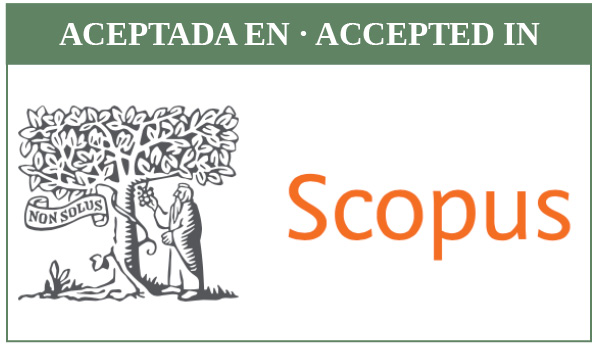Edition and translation of the Ḥassāní manuscript of the first Mauritanian constitution
DOI:
https://doi.org/10.30827/meaharabe.v70i0.15122Keywords:
Legal dialect texts, Writing of Ḥassāniyya dialect, Ḥassāniyya dialect, Writing of Arabic dialects, Maghreb´s dialectsAbstract
The purpose of this paper is to present and discuss the manuscript that contains the full text of Mauritania‟s first constitution translated from French to Ḥassāniyya in 1959. The manuscript is one of the first dialectal Ḥassāniyya texts to be preserved in wri- ting. As a legal text, the translation from French to Ḥassāniyya posed a considerable cha- llenge but was possible with the use of the traditional Ḥassāni lexicon. The editing of the manuscript text followed the usual methodology, taking into account that the text is dialec- tal and for this reason the restitution must follow the grammar rules of Ḥassāniyya. Given this circumstance, the editing process entailed transcribing the manuscript in its original dialectal version, which reflects the linguistic features of the Ḥassāniyya dialect. The text, in addition to the value of its legal content, constitutes one of the first texts written in this dialect and can be considered a successful attempt to strengthen a dialect writing system.
Downloads
References
AMARA, A. “L´écriture en arabe dialectal dans le corpus de lettres arabes du Constantinois «Papiers Dudivier» 1833-1840”. En M. MEOUAK; P. SÁNCHEZ Y Á.VICENTE (eds.). De los manuscritos medievales a internet: la presencia del árabe vernácula en las fuentes escritas. Zaragoza: Instituto de Estudios Islámicos y del Oriente Próximo, 2012, pp. 255-273.
BLAU, J. Studies in Middle Arabic and its Judaeo-Arabic variety. Jerusalén: The Magnes Press-The Hebreu University, 1988.
CAUBET, D. “Apparition massive de la darija à l´écrit à partir de 2008-2009: sur le papier et sur la toile: quelles graphie ¿Quelles régularités?”. En M. MEOUAK; P. SÁNCHEZ Y Á.VICENTE (eds.). De los manuscritos medievales a internet: la presencia del árabe vernácula en las fuentes escritas. Zaragoza: Instituto de Estudios Islámicos y del Oriente Próximo, 2012, pp. 377-402.
COLIN, G. S. “Un document sur l´arabe dialectal d´Occident (au XIIe siècle)”. Hespéris, 12 (1931), pp. 1-32.
CORRIENTE, F. El léxico estándar y andalusí del Glosario de Leiden. Madrid: Universidad Complutense de Madrid, 1991.
CORRIENTE, F. El léxico árabe andalusí según el “Vocabulista in arabico”. Madrid: Universidad Complutense de Madrid, 1989.
—. El léxico árabe andalusí según P. de Alcalá (ordenado por raíces, corregido, anotado y fonémicamente interpretado). Madrid: Universidad Complutense de Madrid, 1988.
DÍAZ GARCÍA, A. El dialecto árabe-hispánico y el “Kitāb fī laḥn al-„āmma” de Ibn Hišām al-Lajmī. Granada: Universidad de Granada, 1973.
ELINSON, Alexander E. “Dārija and changing writing practices in Morocco”. International Journal of Middle East Studies, 24 (2013), pp. 715-730
FERRANDO, I. Introducción a la historia de la lengua árabe. Zaragoza: Navarro&Navarro, 2001.
FÜCK, J. „Arabīya: recherches sur l’histoire de la langue et du style arabe. Trad. C. Denizeau. París: Librairie Marcel Didier, 1955.
MEOUAK, M.; SÁNCHEZ, P. y VICENTE, Á. (eds.). De los manuscritos medievales a internet: la presencia del árabe vernácula en las fuentes escritas. Zaragoza: Instituto de Estudios Islámicos y del Oriente Próximo, 2012.
OULD MOHAMED BABA, Ahmed-Salem. Diccionario Ḥassāniyya-Español. Cádiz: Editorial Uca/UcoPress, 2019.
—. “Le genre poétique ḥassānī ẓṛayga”. En A. FAYEZ FARIS y R. A. HAFID (eds.). Lisan al-arab. Studies in Arabic dialects. Proceedings of the 10th Inter- national Conference of AIDA Qatar University, Neue Beihefte zur Wiener Zeitschrift für die Kunde des Morgenlandes, 9 (2013), p. 241.
—. “La maḥaḍra de Mauritania: Una universidad nómada”. Al-Andalus-Magreb, 19 (2012), pp. 345-360.
—. Refranero y fraseología ḥassānī. Recopilación, explicación, estudio gram- matical y glosario. Zaragoza: Instituto de Estudios Islámicos y del Oriente Próximo, 2008.
—. “Lə-ġna, poesía popular en ḥassāniyya”. En Estudios de dialectología norte- africana y andalusí, 9 (2005), pp. 205-231.
VICENTE, Á. “Sur la piste de l‟arabe marocain dans quelques sources écrites an- ciennes (du XIIe au XVIe siècle)”. En M. MEOUAK; P. SÁNCHEZ Y Á.VICENTE (eds.). De los manuscritos medievales a internet: la presencia del árabe vernácula en las fuentes escritas. Zaragoza: Instituto de Estudios Islámicos y del Oriente Próximo, 2012, pp. 103-120.
WULD AḤMAD SĀLIM, S.-A.; WULD ḤADDAMĪN, S.-M. et alii (eds.). Saddūm Wuld Ndyartu 1122 -1710 /1227-1812. Dīwān al-šiʿr al-šaʿbī. Nuakchott: al-Ma„had al-Mūrītānī li-l-Baḥṯ al-„Ilmī, 1997.
Downloads
Published
How to Cite
Issue
Section
License
The authors publishing their work in this journal agree to the following terms and conditions:
1. The authors retain the copyright and give the journal the right to be the first publication of the work and also to be licensee under a Creative Commons Attribution License which allows others to share the work, provided the author of the work and the initial publication in this journal are acknowledged.
2. Authors may make additional agreements separately for the non-exclusive distribution of the version of the work published in the journal (for example, putting it in an institutional repository or publishing it in a book), with acknowledgement of its initial publication in this journal.
3. Authors are allowed and encouraged to electronically disseminate (for example, in institutional repositories or on their own web page) the published version of their works (publisher's post-print version) or, if not possible, the author's reviewed and accepted post-print version. This is to facilitate productive exchanges, and allow for earlier and greater citation by third parties of the published works (See The Effect of Open Access).
4. The journal accepts no responsibility for the opinions expressed by the authors.















